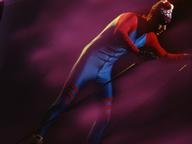Quiz Answer Key and Fun Facts
1. What term is most commonly used to describe the person participating in luge?
2. People in luge achieve tremendous speeds, partly due to having very little friction between their sled and the ice. What are the only parts of the sled that touch the ice surface?
3. What part of the sled does the slider actually lay upon?
4. The luge sled is not simply hurtling down ice, out of control. The slider has a few ways he can control the sled's course on the track. Which of these is not a method used by sliders to steer their sled?
5. The slider dons some special pieces of equipment that make a few things easier on the track. What special purpose do the slider's "booties" serve?
6. The majority of each sled is made of steel and fiberglass. However, the sled contains another very important material which helps it to turn. What is it?
7. When a slider gets too far out of his intended sliding line, they may try to correct their course by pushing very hard on one of the bows. What is this technique commonly called?
8. Which of the following is considered legal under Olympic luge rules?
9. Under Olympic rules, what is a 195-pound male slider allowed to do that a 205-pound slider isn't?
10. Where did the fine sport of luge originate?
Source: Author
slapchop
This quiz was reviewed by FunTrivia editor
Nightmare before going online.
Any errors found in FunTrivia content are routinely corrected through our feedback system.
